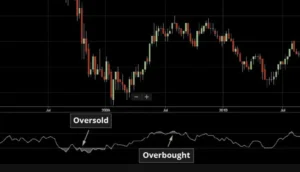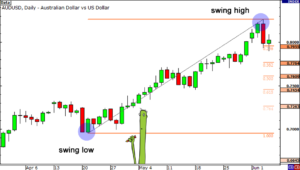Understanding the Foreign Exchange Market from the Ground Up
The foreign exchange market—commonly known as Forex or FX—is the largest and most liquid financial market in the world. Trillions of dollars are traded daily as individuals, businesses, and governments convert one currency into another. But for those just starting their trading journey, the term “forex” can seem complex. Let’s break it down into clear, easy-to-understand fundamentals so you can build a strong foundation in your trading education.
What Does “Forex” Mean?
Forex stands for “foreign exchange,” referring to the process of changing one currency into another. This exchange typically occurs for purposes such as tourism, international business, or investment, but in trading, it’s all about speculation—traders attempt to profit from changes in currency values over time.
For example, if you believe the euro will strengthen against the U.S. dollar, you might buy the EUR/USD currency pair. If your prediction is correct and the euro increases in value, you can sell at a profit.
How the Forex Market Works
Unlike stock exchanges like the NYSE or NASDAQ, forex trading doesn’t take place on a centralized exchange. Instead, it’s conducted over-the-counter (OTC), meaning all trading is done electronically through computer networks across the globe. This allows the market to operate 24 hours a day, five days a week.
Major Participants Include:
- Central Banks: Influence currency prices through interest rates and monetary policy.
- Commercial Banks & Institutions: Handle large-volume trades on behalf of clients.
- Corporations: Exchange currency for global business operations.
- Retail Traders: Individual traders using online platforms to speculate on currency movements.
The Forex Pairs You Trade
In forex, currencies are always quoted in pairs, such as USD/JPY or GBP/USD. The first currency in the pair is the base currency, and the second is the quote currency. The price tells you how much of the quote currency is needed to buy one unit of the base currency.
Types of Currency Pairs:
- Major Pairs: Include the most traded currencies (e.g., EUR/USD, USD/JPY).
- Minor Pairs: Don’t involve the U.S. dollar but are still actively traded (e.g., EUR/GBP).
- Exotic Pairs: Include a major currency and a currency from an emerging or smaller economy (e.g., USD/TRY).
Why Do People Trade Forex?
There are many reasons why forex trading appeals to individuals and institutions alike:
- Liquidity: Massive trading volume makes it easy to enter and exit positions.
- Accessibility: Low initial capital required to start trading via online platforms.
- Flexibility: The 24-hour market fits around various schedules.
- Leverage: Traders can control larger positions with a small deposit (though this also increases risk).
- Volatility: Currency values are influenced by economic news, making for dynamic trading opportunities.
What Moves the Forex Market?
Unlike stocks, which are often influenced by company-specific news, forex markets react primarily to macroeconomic factors and geopolitical developments. Here are some of the key drivers:
- Interest Rates: Higher rates tend to attract foreign capital, boosting currency value.
- Economic Data: GDP, employment rates, and inflation figures all impact a country’s currency.
- Political Stability: Markets prefer stability. Political unrest often causes currencies to weaken.
- Market Sentiment: News, forecasts, and trader behavior can drive short-term fluctuations.
How Do You Start Trading Forex?
Starting in forex doesn’t require a large investment, but it does require discipline, education, and practice.
Steps to Begin:
- Choose a Reputable Broker: Look for regulated brokers with transparent pricing and a user-friendly platform.
- Open a Demo Account: Practice trading with virtual funds to get used to the platform and market movements.
- Learn Forex Basics: Understand terminology like pips, spreads, lots, and leverage.
- Develop a Strategy: Decide whether you’ll day trade, swing trade, or position trade.
- Manage Risk: Always use stop-loss orders and never risk more than you can afford to lose.
Common Forex Terms You Should Know
- Pip: Smallest price move in a currency pair (usually 0.0001).
- Lot: Standardized trading size (e.g., 1 lot = 100,000 units).
- Spread: Difference between the bid (buy) and ask (sell) price.
- Leverage: Borrowed capital used to amplify potential gains (and losses).
Understanding these terms is essential as they form the language of forex trading.
Final Thoughts
Forex trading can be a rewarding and empowering skill when approached with the right mindset and preparation. It’s not about quick wins—it’s about learning how the market works, developing strategies, managing your risk, and continuously improving.
By starting with a solid grasp of what forex is and how it operates, you lay the groundwork for smarter trading decisions. Whether you’re aiming to trade part-time or pursue it more seriously, understanding the basics is your first step toward success.
📘 Ready to explore more?
Check out our Forex Strategy Guides and Broker Comparison Tools to continue your journey with confidence.


